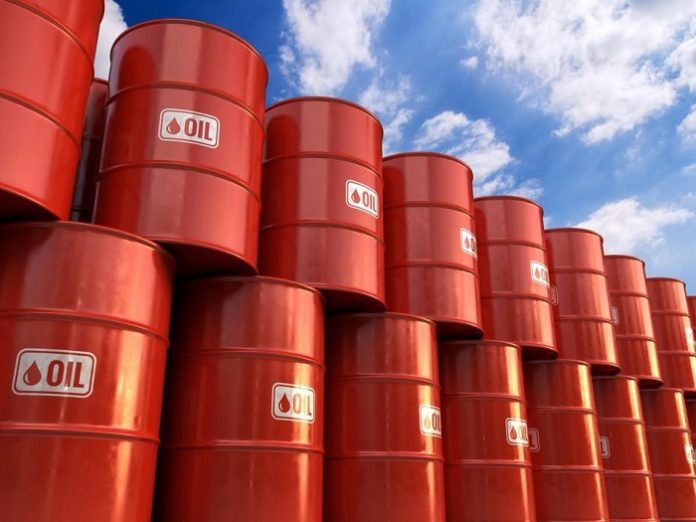The International Monetary Fund said Wednesday the prospects for oil and gas exporters in the Middle East and North Africa (MENA) have improved, while countries in the Caucasus and Central Asia face a particularly challenging outlook given linkages to Russia and Ukraine.
In its April 2022 Regional Economic Outlook, Middle East and Central Asia, themed “Divergent Recoveries in Turbulent Times,” the IMF noted that the war in Ukraine and sanctions on Russia are exacerbating the divergence in recovery prospects for the Middle East and Central Asia.
Despite better-than-expected momentum in 2021, the economic environment in 2022 is defined by extraordinary headwinds and uncertainties, particularly for commodity importers, with higher and more volatile commodity prices, rising inflationary pressures, faster-than-expected monetary policy normalization in advanced economies, and a lingering pandemic. Downside risks include a prolonged war and further sanctions on Russia, tighter-than-expected global financial conditions, possible de-anchoring of inflation expectations, a sharper slowdown in China, and new pandemic outbreaks.
Policymaking has become increasingly complex, with dwindling macro policy space to deal with shocks, amid high debt and inflation. Policies will need to be calibrated carefully to country circumstances to manage uncertainties, maintain macroeconomic stability, and support the recovery while protecting the most vulnerable and ensuring food and energy security. Structural reforms have become even more urgent to prevent scarring from the pandemic and the war and ensure an inclusive recovery.
Oil exporters will see better prospects because of higher oil production in line with the Organization of Petroleum Exporting Countries and other major oil producers (OPEC+) agreement, higher-than-expected oil prices, and successful mass vaccination campaigns in several countries.
Growth in GCC countries is projected to accelerate from 2.7 percent in 2021 to 6.4 percent in 2022, an upgrade of 2.2 percentage points from October, mainly due to upward revisions for Saudi Arabia (2.8 percentage points) and, to a lesser extent, other economies (Kuwait, Oman, UAE), reflecting higher oil production in line with the OPEC+ agreement, base effects, and a recovering non-oil sector. Non-oil GDP in the GCC, despite a gradual slowdown relative to 2021, is expected to continue growing at a healthy pace in 2022-23 (about 34-1⁄2آ percent).
This will sustain the outlook for these economies as oil GDP slows down after 2022. In other MENA oil exporters, country-specific factors are playing a role in 2022 – activity in Algeria will be supported by the expected normalization of rainfall after the drought in 2021; and growth in Iran is expected to decelerate from 4 percent in 2021 to 3 percent in 2022 (an upgrade of 1 percentage point, reflecting higher oil production and exports to China, and assuming that US sanctions remain in place).
Growth for CCA oil exporters is expected to slow considerably from 4.4 percent in 2021 to 2.3 percent in 2022. The downgraded outlook for Kazakhstan in 2022 reflects the impact of tighter monetary policy and higher inflation on domestic demand, whereas the downward revision to 2023 growth mainly captures delays in the expansion of the Tengiz oil field. Inflation prospects vary across oil exporters.
Despite an upgrade, inflation is expected to peak at 3.1 percent in GCC countries in 2022, after 2.2 percent inflation in 2021. By contrast, high inflation is a concern outside GCC countries. For instance, inflation has been revised significantly up for Iran and Iraq by 4.8 and 2.4 percentage points to 32.3 percent and 6.9 percent in 2022, respectively, capturing the pass-through from currency depreciation and loose monetary and fiscal policies (Iran), and higher imported inflation (Iraq).
Inflation for CCA oil exporters is expected to reach 10.4 percent, on average, in 2022, largely driven by Azerbaijan, which is seeing a broad based surge in prices.
The windfall from higher oil prices is expected to improve fiscal and external balances. Oil revenues are projected to increase by an average of 5.3 percentage points of GDP compared to 2021, reaching a total of USD 818 billion (an upward revision of USD 320 billion compared to October). Current account balances are expected to improve to 12.2 percent of GDP (an upward revision of about 8.7 percentage points compared to October).
Accordingly, official reserves are expected to increase to USD 1.3 trillion in 2022 (an upgrade of about USD 235 billion). Most oil exporters are expected to rebuild fiscal buffers. Non-oil primary balances are set to improve by an average of 2.8 percentage points of GDP for most oil exporters, except for Algeria, Iraq, Qatar, and UAE, reflecting a sharp slowdown in non-oil GDP (Iraq) and higher primary expenditure for Algeria, Qatar, and UAE. As a result, the expansionary fiscal stance after the pandemic is expected to be fully reversed in some countries-with non-oil primary fiscal balances projected to improve from their pre-pandemic levels (Azerbaijan, Bahrain, Oman, and Saudi Arabia).
Debt levels in 2022 are projected to decline to 34.6 percent of GDP (a 2.8-percentage-point downgrade), and public gross financing needs are expected to contract markedly by USD 463 billion compared to 2020-21, leading to a buildup of deposits of USD 92 billion over 2022-23. – KUNA























